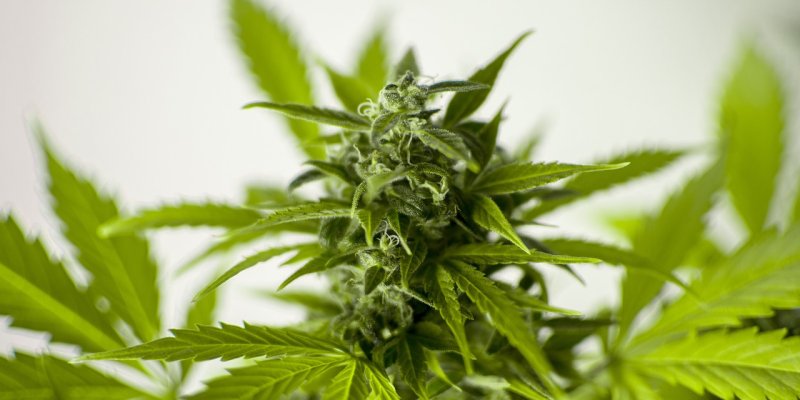
Cultivating cannabis at home has become a popular pastime where it's legal, offering enthusiasts a personal connection to their stash and a rewarding gardening experience. However, navigating the legal landscape and mastering the horticultural techniques of growing cannabis can be complex. This guide will explore the crucial legal guidelines and best practices for growing cannabis at home, ensuring you stay on the right side of the law while cultivating a thriving cannabis garden.
Understanding Your Local Cannabis Laws
Before you even think about planting your first seed, it’s essential to familiarize yourself with the local laws regarding cannabis cultivation. These laws can vary dramatically depending on where you live, and breaking them can carry serious penalties.
In areas where home cultivation is allowed, there are usually specific rules about how many plants you can grow, where you can grow them, and who can access them. For instance, some regions limit cultivation to indoor spaces to avoid public visibility, while others might allow outdoor gardens but with strict security measures like fencing or locked enclosures.
You should also check the regulations about registering as a grower if required, and any restrictions concerning the proximity to schools or public parks. Often, these laws are updated, so keeping abreast of the latest regulations through your local government’s website or cannabis advocacy groups is crucial. Remember, just because you can grow cannabis at home doesn’t mean you can sell it. Sales without a license are usually illegal and could lead to major legal trouble.
Best Practices for Growing Cannabis
Growing cannabis successfully at home requires more than just throwing seeds into the soil and hoping for the best. It starts with understanding the plant's lifecycle and providing the right conditions for each growth stage.
Cannabis plants thrive on light, so whether you’re growing indoors under artificial lighting or outdoors in natural sunlight, ensuring your plants get enough light is key to robust growth. The light type and exposure duration can affect the quality and potency of your final product, so consider investing in quality lighting if you’re growing indoors.
Soil quality and nutrition also play crucial roles. Cannabis plants are heavy feeders, so regular feeding with cannabis-specific nutrients will promote healthy, potent buds. Be careful not to overwater, which can lead to root rot and other moisture-related issues. Proper ventilation is critical in controlling humidity and preventing mold, especially in confined indoor grow spaces.
Choosing the right strain is equally important. Some strains are easier to grow than others and may better suit your growing environment and skill level. Start with a forgiving strain resilient to environmental stresses and common beginner mistakes.
The final stages of cultivating cannabis at home are harvesting and curing, processes that greatly influence the quality and effectiveness of your product. Knowing when to harvest is crucial: too early, and the THC levels may be too low; too late, and the THC begins converting to CBN , which could result in a more sedative effect than desired.
Once harvested, proper drying and curing are essential to prevent mold and to ensure that your cannabis burns smoothly and tastes great. Hang your plants in a cool, dark, and dry place with good air circulation to dry them out gradually. After drying, the buds need to be cured, which involves storing them in airtight containers and opening them regularly to allow moisture to escape and air to refresh.
Curing can take several weeks, but it’s worth the patience. Properly cured cannabis will have a smoother smoke and a more complex flavor profile, enhancing the overall experience.
Selecting the Ideal Environment for Growth
Choosing the right environment for your cannabis plants is critical for their health and yield, making it one of the most important steps to grow weed . Whether you grow indoors or outdoors, each setting offers unique benefits and challenges that must be managed effectively.
For indoor growers, the primary advantage is control. You can regulate temperature, humidity, light cycles, and CO2 levels, creating an optimal growing environment that can lead to a higher-quality yield. However, this control comes with increased responsibility. You must invest in quality lighting—LED or HID lamps are popular choices. Temperature and humidity should also be monitored with precision. Ideal temperatures range from 70 to 85 degrees Fahrenheit during the day and should drop by about 15 degrees at night to mimic natural conditions.
Outdoor growing, on the other hand, leverages the sun's natural power, which can lead to bigger plants and larger yields. However, plants are subject to the whims of weather, pests, and disease. Selecting a secure, private location with good sunlight, mild winds, and easy access to water is essential. Soil quality must be assessed and amended to provide the best nutrients for cannabis growth. Outdoor growers must also consider the timing of their grow season to align with favorable weather conditions.
Advanced Techniques for Enhanced Yields
Exploring advanced growing techniques can be highly beneficial for those looking to maximize their cannabis yield and potency. Techniques such as "topping," "super cropping," and "sea of green" are popular among experienced growers to increase yield and can be adapted to both indoor and outdoor setups.
"Topping" involves cutting off the top of the main stem to promote the growth of two new branches. This can lead to a more bushy plant, increasing the number of buds that receive direct light. "Super cropping" is slightly more aggressive; it involves bending and damaging the stems to encourage bushier growth and increase resilience.
The "sea of green" method involves growing many small cannabis plants close together rather than fewer large plants. This can significantly shorten the vegetative phase and lead to earlier harvests. Each plant yields less, but the collective output per square foot is higher than that of traditional growing methods.
These techniques require careful execution and monitoring to avoid stressing the plants too much. Stress can lead to various growth issues, including hermaphroditism, where the stressed plant produces both male and female flowers, which can severely affect the quality of the buds.
The Importance of Genetics in Cannabis Cultivation
The genetics of your cannabis seeds are a foundational aspect of cultivation. Quality genetics ensure a potent yield and contribute to your plants' resilience and health. When selecting seeds, consider the strain’s genetic lineage and suitability to your growing environment.
Indica, sativa, and hybrid strains have distinct characteristics and growth patterns. Indicas are shorter and bushier, making them ideal for indoor environments. Sativas, with their taller and slimmer profile, are better suited for outdoor grows where space is less of a constraint. Hybrids can balance these traits, with many breeders developing strains that combine the best qualities.
Additionally, choosing between autoflowering and photoperiod strains can greatly impact your growing cycle. Autoflowering plants bloom based on age rather than light exposure, making them simpler for beginners and suitable for regions with less consistent light patterns. Photoperiod plants generally require carefully controlled light cycles to trigger flowering.
Investing in high-quality seeds from reputable suppliers is crucial. They ensure you’re starting with good genetics, which can lead to less hassle during the growth phase and a more satisfying final product.
Reviews - Interviews - Promo - Radio Play
Contact zach@metaldevastationradio.com












